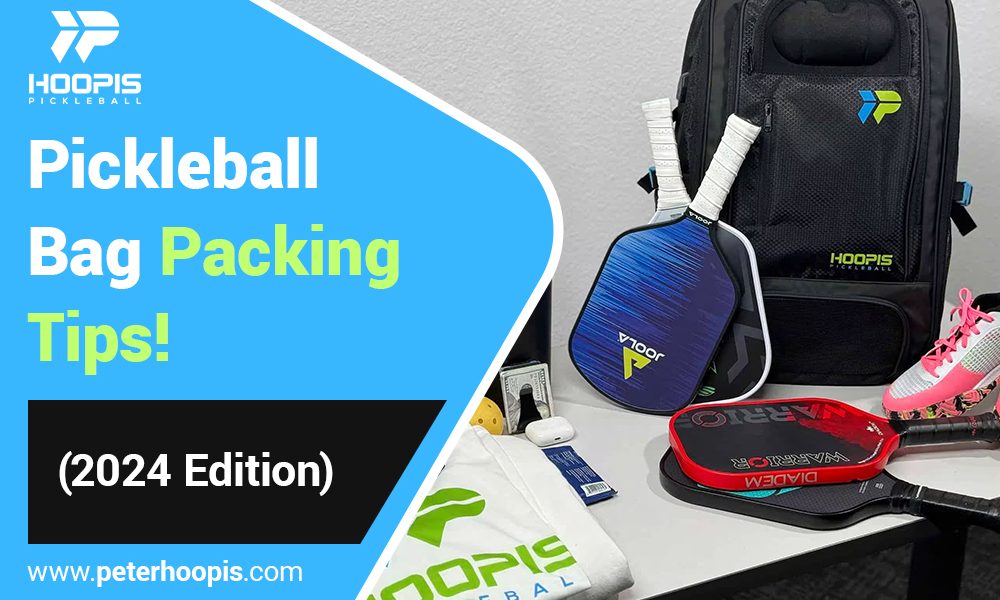Hey Pickleballers!
Heading to a tournament soon? Let’s talk about packing your pickleball bag. We all know that feeling of digging through a cluttered bag, trying to find that one elusive item while your match is about to start.
Not fun, right?
That’s why packing efficiently is more than just a convenience; it’s a necessity for any serious player.
When you’re off to compete, every second counts. You want to spend your time warming up, strategizing, or just chilling before the game, not wrestling with your gear.
But here’s the deal: pickleball bags aren’t bottomless pits (though we wish they were!), and fitting everything you need into that limited space can feel like a puzzle.
And let’s not forget the speed factor. You need to grab your gear quickly, whether it’s your favorite paddle, a fresh ball, or a quick snack. Organizing your bag means you can find what you need without any frantic searching.
So, in this post, we’re going to explain how to pack your pickleball bag like a pro. We’ll cover everything from the essentials you need to pack, to pickleball bag packing tips on maximizing space and keeping everything easily accessible. Whether you’re a tournament regular or gearing up for your first competition, these tips will help you stay organized, prepared, and focused on what really matters – playing your best game!
Let’s get started.
Understanding Your Pickleball Bag
Before we jump into packing, let’s get familiar with our trusty sidekick – the pickleball bag. Not all bags are created equal, and knowing the ins and outs of yours can make a big difference.
Different Types of Pickleball Bags: Pros and Cons
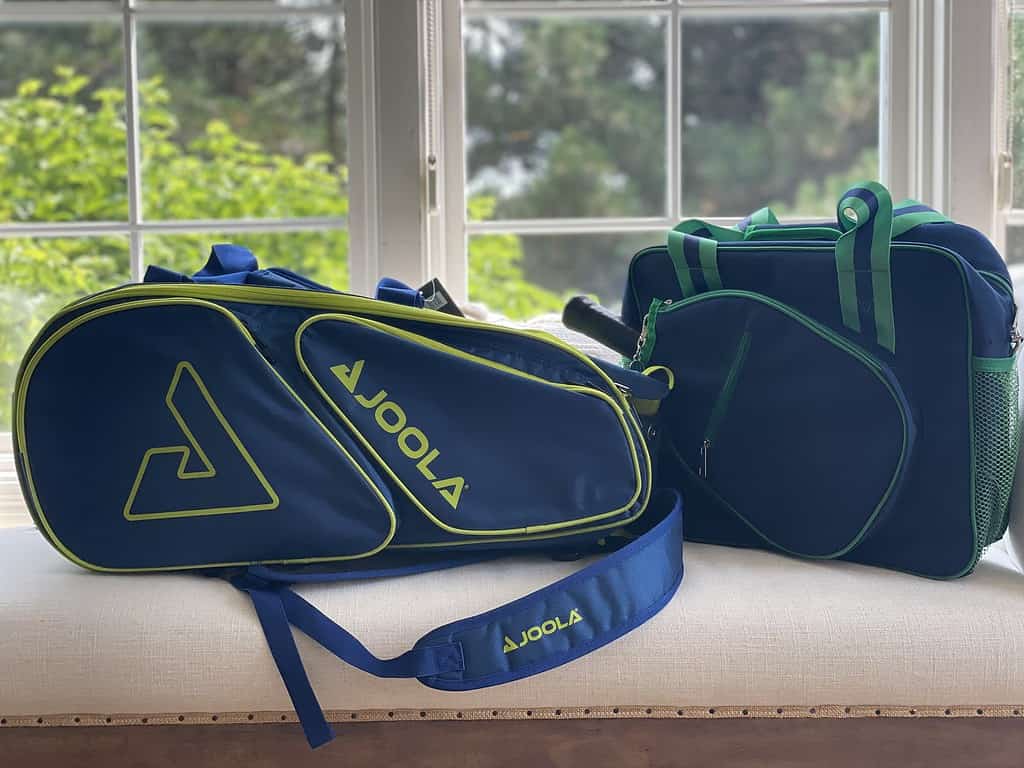
First up, let’s look at the types of bags out there.
- Pickleball Gear Bag: These come in all shapes and sizes, from small to large, and can serve as multipurpose bags for your pickleball needs. They may not have specialized compartments like the pickleball bag, but they can still get the job done.
- Pickleball Backpacks: Super popular for their ease of carrying and versatility. They might not have specialized pickleball compartments, but they’re usually more than capable of holding your gear. Plus, they’re great if you’re biking or walking to your games.
- Pickleball Duffle Bags: A good old duffle bag can be a solid choice if you prefer a more open space to pack your gear. They’re spacious but can get a bit chaotic if you’re not a bit strategic with your packing.
- Pickleball Sling Bags: These single-strap bags are perfect for those who want to travel light. They’re usually compact and easy to carry, but they may not have enough space for everything you need.
What to Look For in a Pickleball Bag
When choosing a pickleball bag, here’s what you should consider:
Key Features for Tournament Play
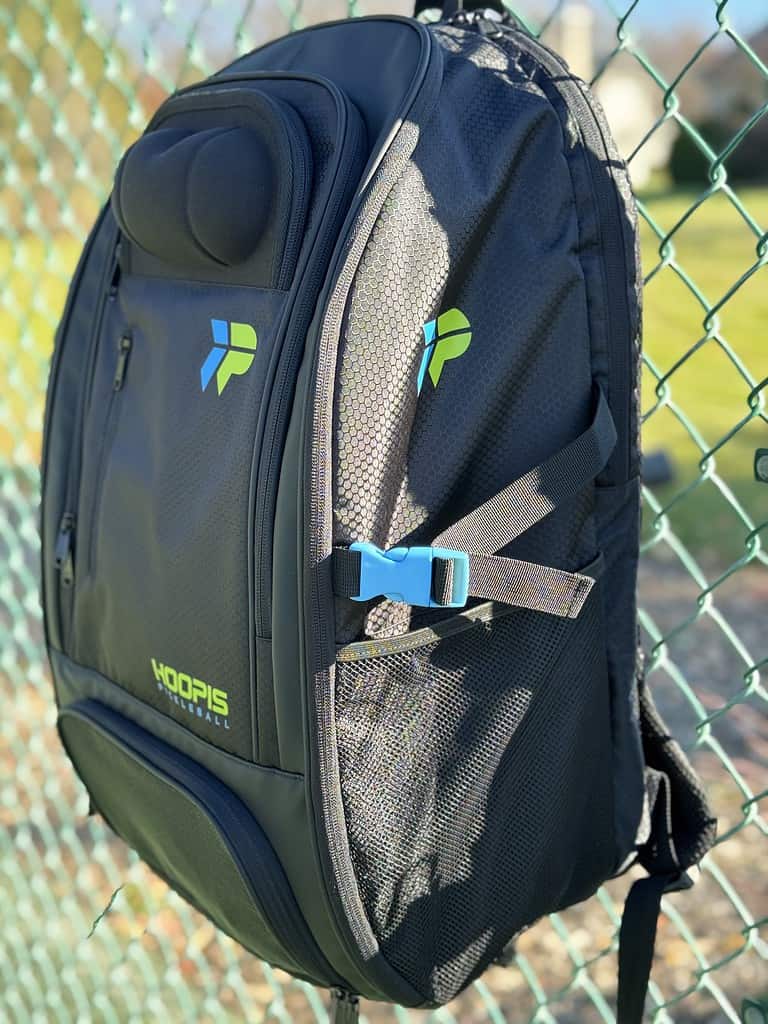
When it comes to tournaments, some features in your bag can be real game-changers:
- Paddle Protection: Look for a bag with a dedicated paddle compartment or at least a way to secure your paddles. You don’t want them bouncing around and getting damaged.
- Ventilation: Trust me, after a long day of play, your shoes and clothes will thank you for a bag with good ventilation! It helps keep everything fresh and less… well, stinky.
- Water Resistance: Weather can be unpredictable. A water-resistant bag means one less worry if you get caught in a surprise downpour.
- Comfortable Straps: Comfort is key, especially if you have to carry your bag around all day. Padded, adjustable straps can be a lifesaver.
- Easy Access Pockets: Pockets for quick access to your phone, snacks, or first aid kit can really help, especially when you’re in a rush between matches.
Understanding your bag’s layout and features is the first step to packing like a pro. Once you’ve got a bag that fits your needs, you’re ready to start loading it up with all your pickleball essentials – and that’s where the real fun begins.
Essential Items for Your Pickleball Bag
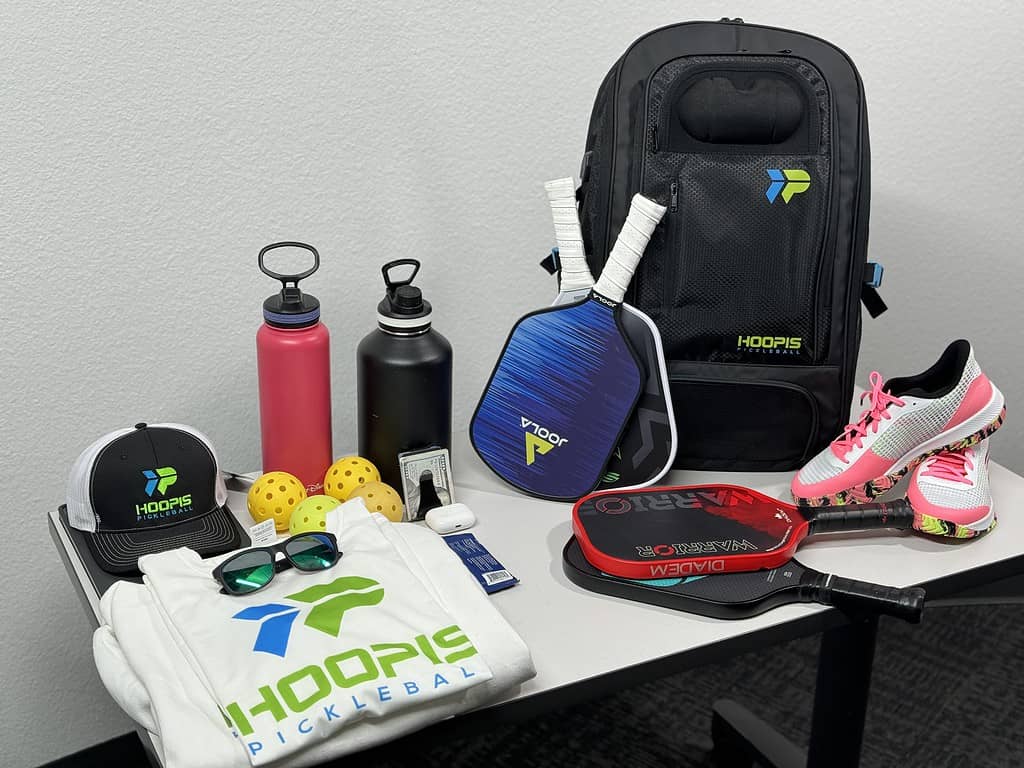
Alright, now that we’ve got our bag sorted, it’s time to pack the essentials. Here’s what you can’t leave behind when you’re heading out for a tournament:
- Pickleball Paddles: Protection and Placement
- Your paddles are your trusty warriors. Most pickleball bags have special compartments for them. If yours doesn’t, wrap them in a towel or a paddle cover to prevent scratches and damage. Place them in a spot where they won’t get squished by other items.
- Balls: Quantity and Storage
- You can never have too many balls, right? Pack a few extra, because balls can crack or get lost. A small, breathable pouch or a side pocket is perfect for keeping them handy and easily accessable.
- Pickleball Shoes: Keeping Them Fresh
- Dedicated pickleball court shoes can give you the edge in a game. Store them in a ventilated compartment if possible. Consider a shoe bag if your bag doesn’t have separate space, to keep the dirt and smell away from the rest of your gear.
- Clothing: Spare Outfits and Layering Options
- Always pack an extra set of clothes – you’ll thank yourself later. Include layers, like a lightweight jacket, especially if you’re playing outdoors. Roll your clothes instead of folding to save space and prevent wrinkles.
- Towels and Grip Aids
- A towel is a must for sweat, showers, or wiping down equipment. Grip aids or overgrips are also essential, especially if you play with sweaty hands. Store these in an easily accessible outer pocket.
Now that we’ve got our basics in check, it’s all about organizing them in the most efficient way. Remember, the goal is to have everything you need without turning your bag into a chaotic jumble. Let’s make sure every item has its place, so you can focus on your game and not on where you put your extra socks!
Organizing Your Gear for Easy Access
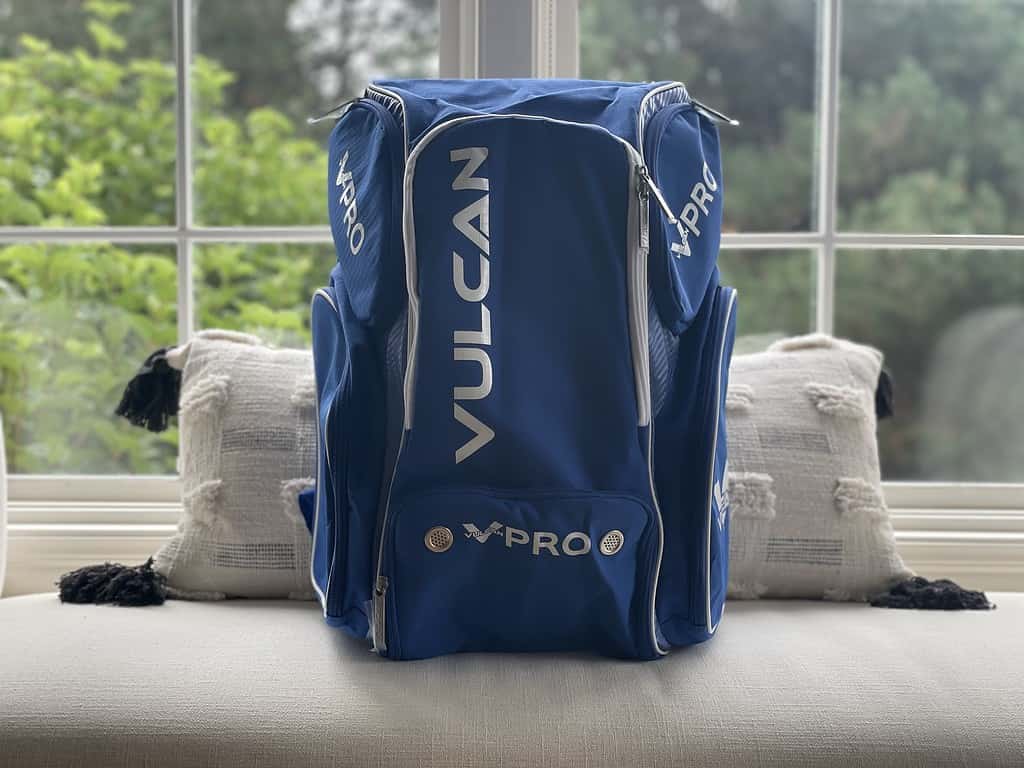
Packing your bag is like a game of Tetris – it’s all about making everything fit in the most efficient way. Here are some tips to keep your gear organized and accessible:
- Dividing Space: Using Compartments Wisely
- Most pickleball bags have various compartments and pockets. Use them! Dedicate each space to specific items – paddles in one, clothing in another, and accessories in the smaller pockets. This way, you know exactly where everything is.
- Quick-Access Items: Smart Pocket Usage
- There are some things you’ll need to grab quickly, like your water bottle, snacks, or your phone. Make sure these are in the most accessible pockets. Side pockets or front pouches are ideal for these items.
- Using Packing Cubes or Bags for Small Items
- For all the little things that tend to get lost at the bottom of your bag – think grips, wristbands, keys – use small packing cubes or zippered bags. Not only do they keep things neat, but they also make it easy to transfer items from one bag to another.
- Avoid Overpacking
- It’s tempting to pack for every possible scenario, but overpacking can make it hard to find what you need and add unnecessary weight. Stick to the essentials and remember that less is often more.
- Frequent Checks and Re-organizing
- After every few games or practices, take a moment to reorganize your bag. It’s easy for things to get messy in the heat of the moment. Regular checks ensure everything stays in its place.
By keeping your bag well-organized, you save time and reduce stress, allowing you to focus on your performance. With everything in its right place, you’ll be ready to hit the court running!
Additional Must-Haves for Pickleball Tournaments
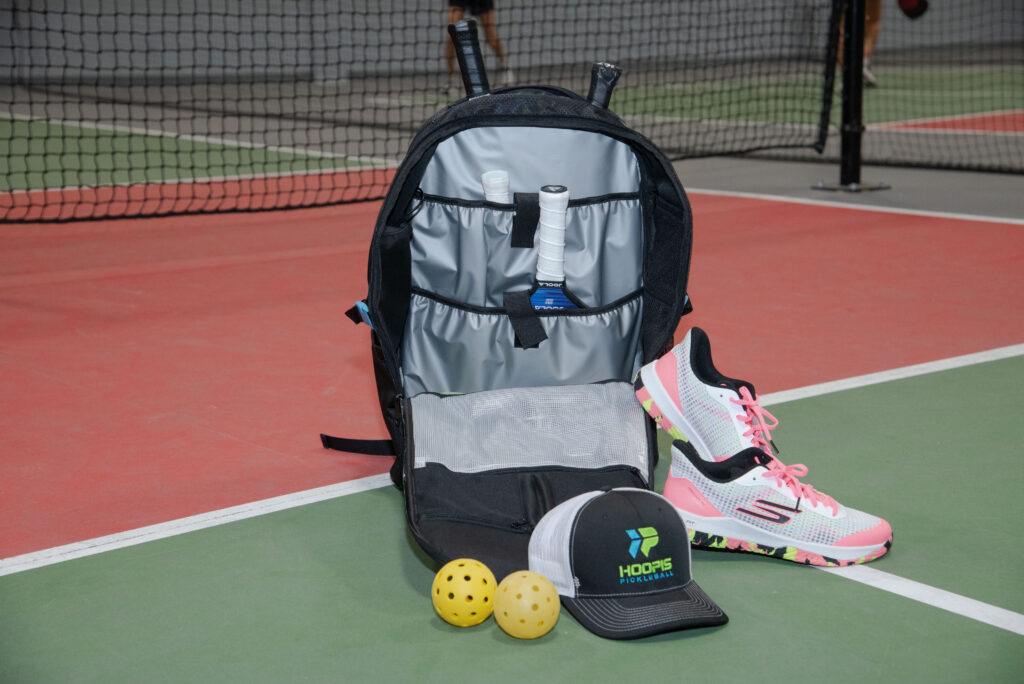
When you’re gearing up for a tournament, there are a few extra items that can really make a difference. Let’s make sure your bag is packed not just with the essentials, but with everything you might need to have the best tournament experience possible.
- Hydration and Snacks: Fueling Up for the Game
- Staying hydrated and energized is key. Pack a water bottle – preferably insulated to keep your drink cool. Include healthy snacks like energy bars, nuts, or fruit for a quick energy boost between matches.
- First Aid Kit: Just in Case
- Accidents happen, so it’s smart to be prepared. A small first aid kit with basics like band-aids, pain relievers, and athletic tape can be a lifesaver. Don’t forget blister plasters – those can be crucial in a pinch.
- Sun Protection: Hats, Sunglasses, and Sunscreen
- If you’re playing outdoors, sun protection is a must. Include a hat or visor, UV-protection sunglasses, and sunscreen. Reapply sunscreen regularly, especially in summer months.
- Weather-Ready Gear: Be Prepared for Anything
- The weather can be unpredictable, so pack for all conditions. This could include a rain jacket, extra socks, and warm-up gear for cooler days. Layering is your friend here.
- Personal Care Items
- Don’t forget personal items like deodorant, a small towel, and perhaps some lip balm. These small comforts can make a big difference in how you feel on the court.
- Extra Accessories
- Consider packing a small notebook and pen for jotting down notes or strategies. Also, a portable phone charger can be a lifesaver for those long days when you need to stay connected.
By including these additional items in your pickleball bag, you’ll be ready for just about anything the tournament throws at you. It’s not just about being prepared for the game, but also ensuring you’re comfortable and ready for the day as a whole.
Advanced Tips for Packing Efficiency
You’ve got the basics and the extras down, but let’s not stop there. Here are some pro tips to pack your pickleball bag like a champ, ensuring you make the most of every inch of space while keeping your gear in top condition.
- Roll vs. Fold: Clothes Packing 101
- When it comes to clothes, rolling is usually better than folding. Rolled clothes take up less space and are less prone to getting wrinkled. This is especially handy for fitting in extra shirts or a spare pair of shorts. Watch this video for a great overview of roll vs fold!
- Maximizing Space: The Art of Tetris
- Think of packing your bag like playing Tetris – every piece should fit together perfectly. Place heavier items at the bottom for stability, and fill in gaps with smaller items like socks and wristbands. This way, you maximize space and keep your bag balanced.
- Weight Distribution: Comfort on the Go
- A well-packed bag is also about comfort. Distribute the weight evenly to avoid strain on your shoulders and back. This is particularly important if you have a backpack-style bag.
- Multi-Functional Items: Less is More
- Whenever possible, choose items that serve more than one purpose. For example, a towel that can be used for drying off and as a cushion for your paddles, or a windbreaker that doubles as a lightweight warm-up jacket.
- Regular Reassessment: Keeping It Fresh
- Every now and then, reassess what you carry. Over time, we tend to accumulate things we don’t need. Keeping your bag lean not only makes it lighter but also helps you find what you need faster.
- Emergency Repairs: A Mini Fix-It Kit
- Consider a small repair kit with essentials like duct tape, safety pins, and a multi-tool. These can come in handy for unexpected repairs to your bag or gear.
Packing efficiently is a skill that gets better with practice. The more you play, the more you’ll understand what you really need and the best ways to fit everything together. With these tips, you’re well on your way to becoming a packing guru, ready for any pickleball challenge that comes your way!
Pre-Tournament Checklist
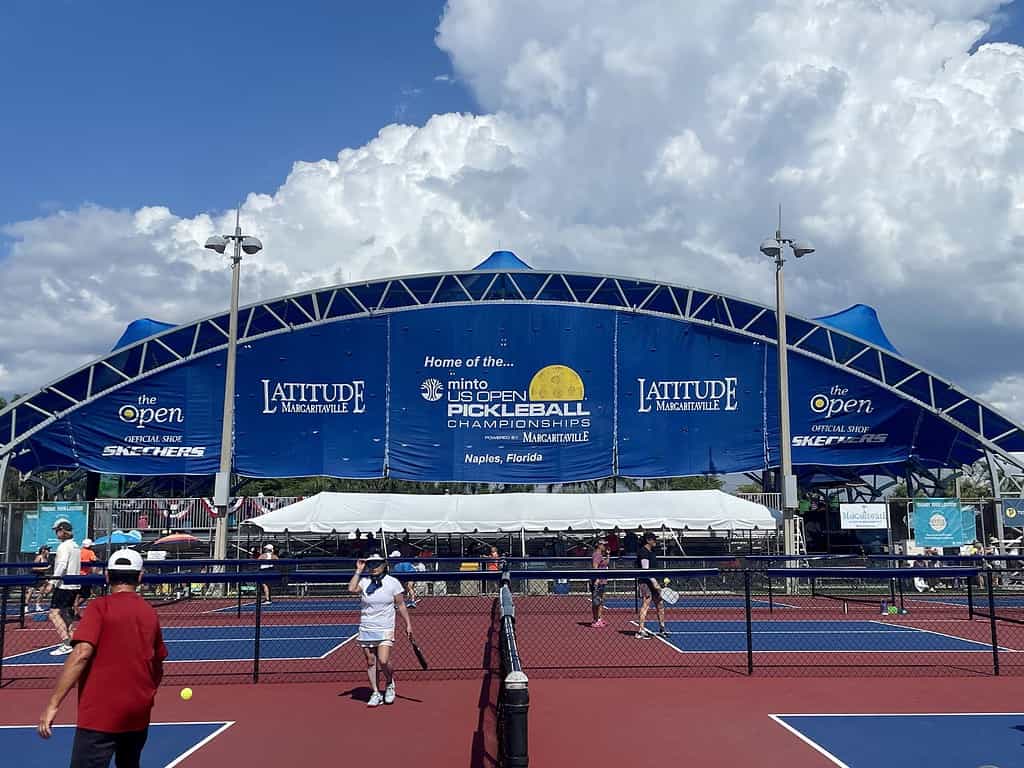
To make sure you’re completely prepared for your tournament, here’s a quick checklist. Go through this before you head out, and you’ll be set to play without any last-minute panic.
- Pickleball Paddles: Check for damage and grip condition.
- Balls: Enough for practice and play.
- Pickleball Shoes: Clean and in good condition.
- Spare Clothing: Including layers for varying weather.
- Towels and Grip Aids: For comfort and performance.
- Hydration: Water bottle (filled) and energy snacks.
- First Aid Kit: Stocked and up to date.
- Sun Protection: Hat, sunglasses, and sunscreen.
- Weather-Ready Gear: Rain jacket, extra socks, etc.
- Personal Care Items: Deodorant, small towel, lip balm, etc.
- Extra Accessories: Notebook, pen, portable phone charger.
- Packing Efficiency: Rolled clothes, well-distributed weight.
- Emergency Repairs: Mini repair kit.
This checklist covers all the essentials and then some, ensuring you’re as prepared as possible for whatever the tournament brings. The key to a stress-free tournament experience is in the preparation. With your bag packed and ready, you can focus on your game and enjoy the competition to the fullest!
Conclusion
And there you have it – your complete guide to packing your pickleball bag like a pro for tournaments. Remember, the way you pack can make a huge difference in your tournament experience. It’s not just about having everything you need; it’s about having it all at your fingertips when you need it.
Efficient packing is all about balance. You want to be prepared for every scenario, but you also don’t want to lug around a bag that weighs a ton. With the tips we’ve covered, you’ll be able to find that sweet spot where everything you need is neatly organized and easily accessible.
As you head off to your next tournament, take pride in the fact that you’re well-prepared. A well-packed bag is a secret weapon of sorts – it keeps you focused, calm, and ready to face any challenge on the court.
So, go ahead and give these tips a try. Feel free to tweak and adjust them to fit your personal needs and playing style. And most importantly, have fun out there! Because at the end of the day, whether it’s a friendly match or a high-stakes tournament, pickleball is all about enjoying the game and the great community around it.

